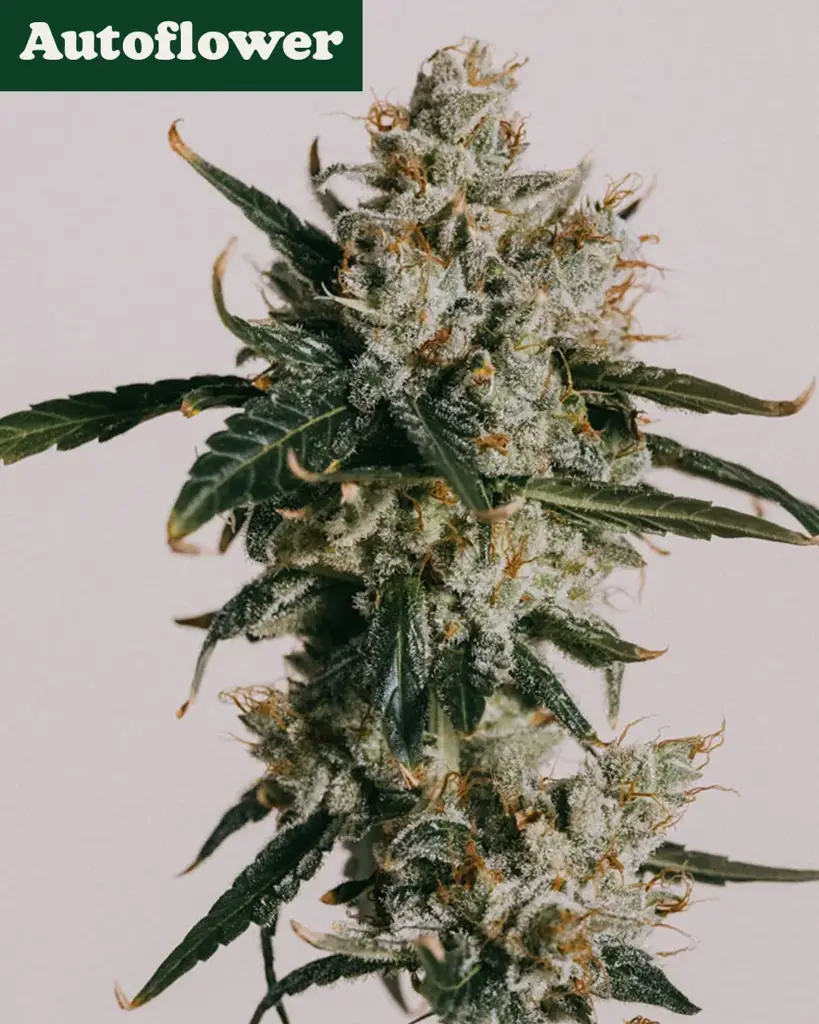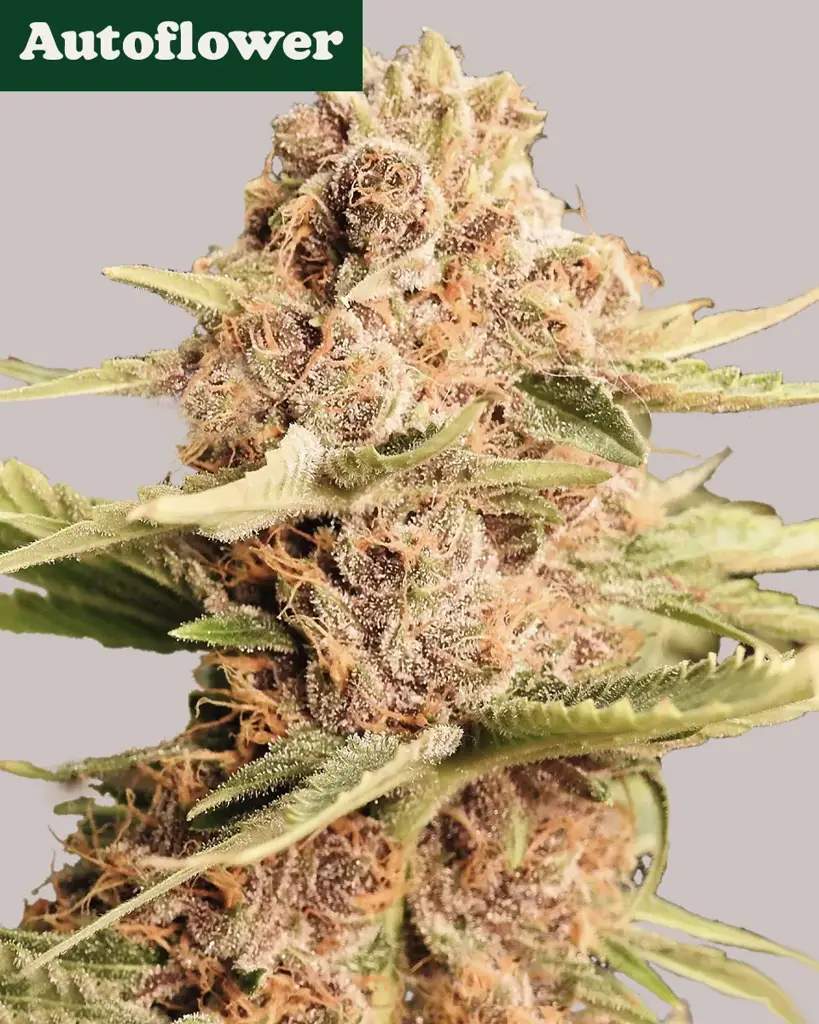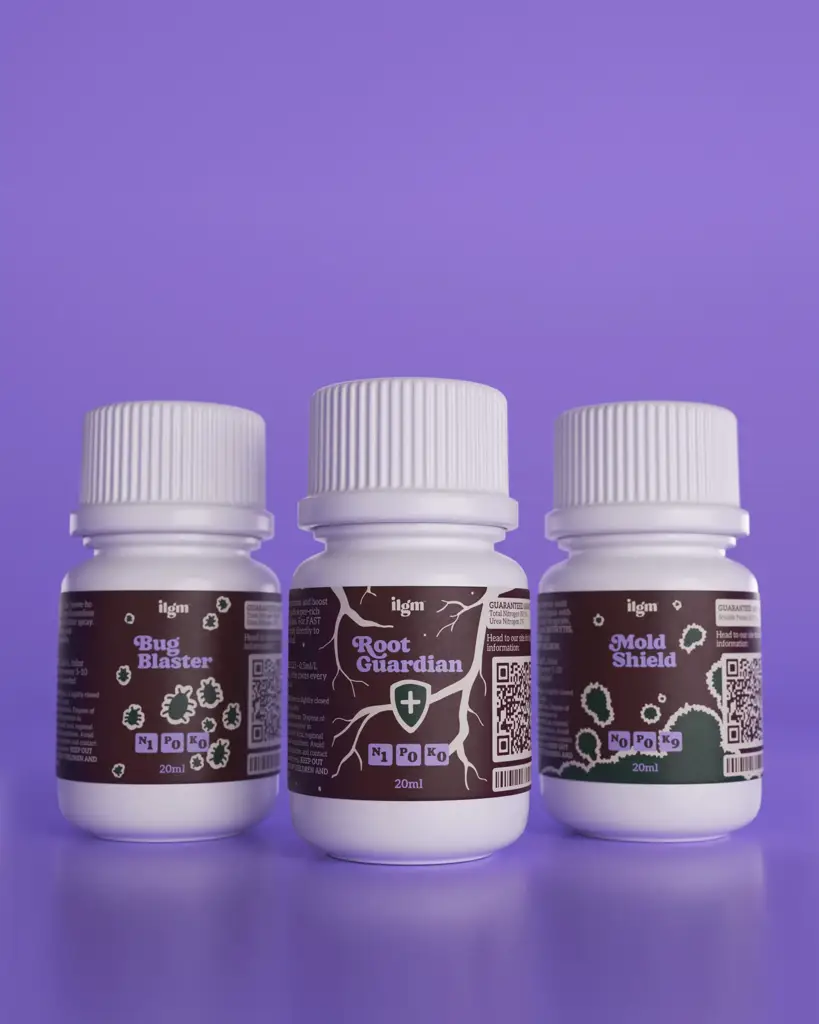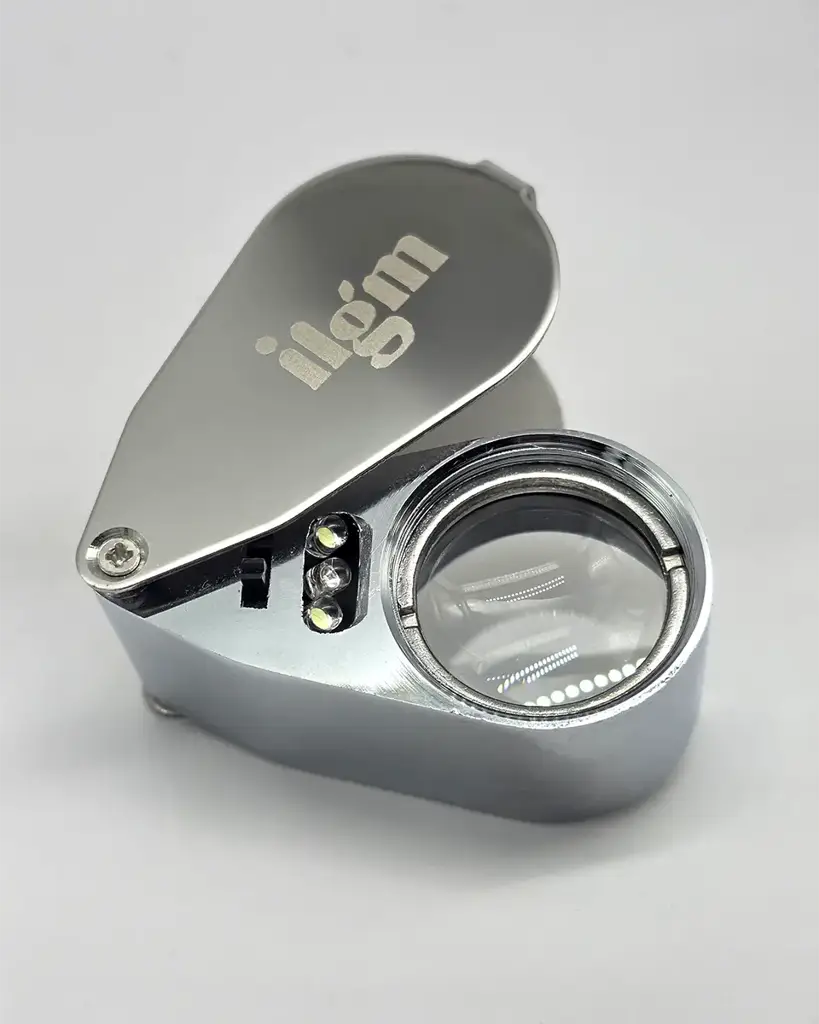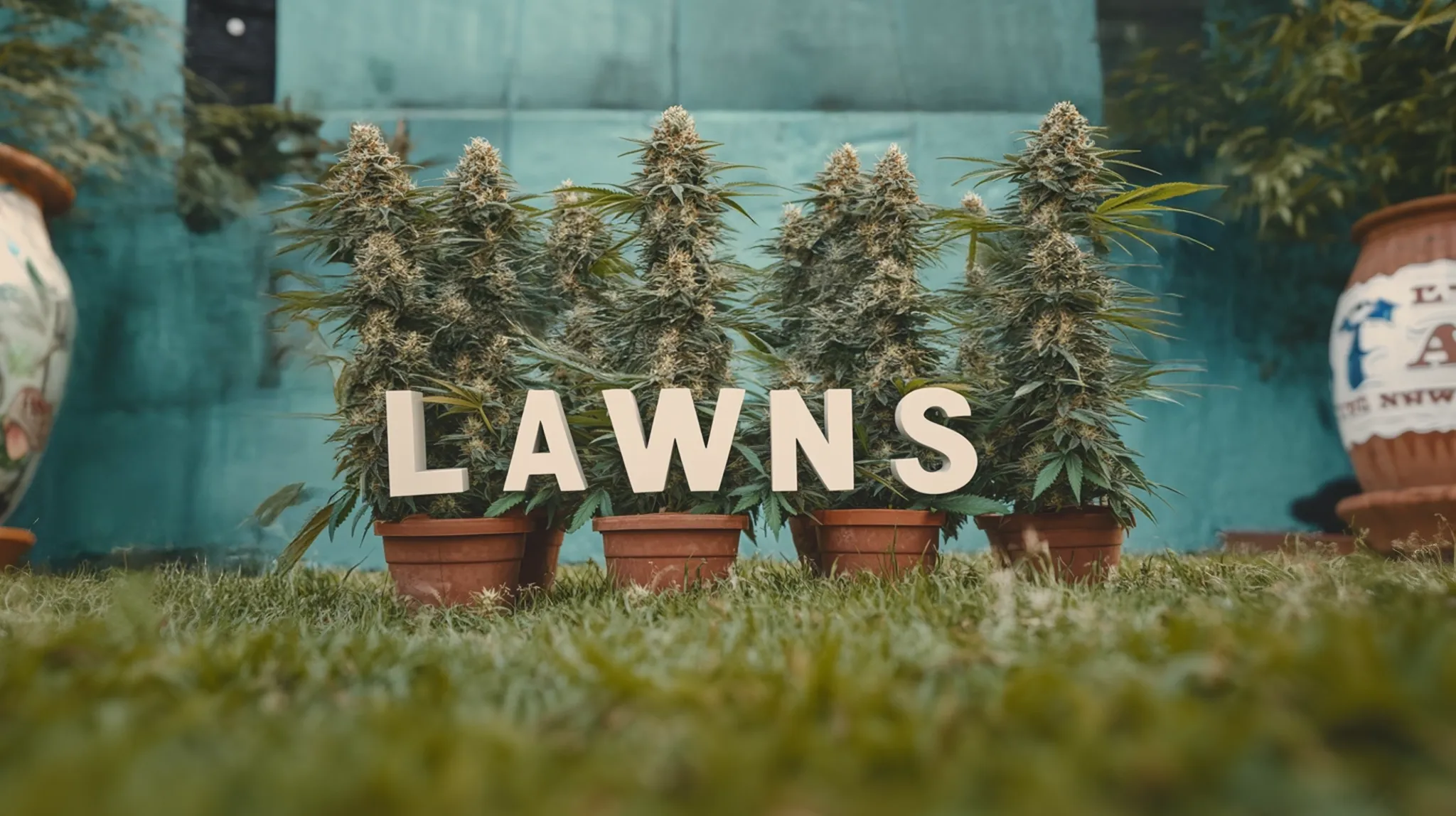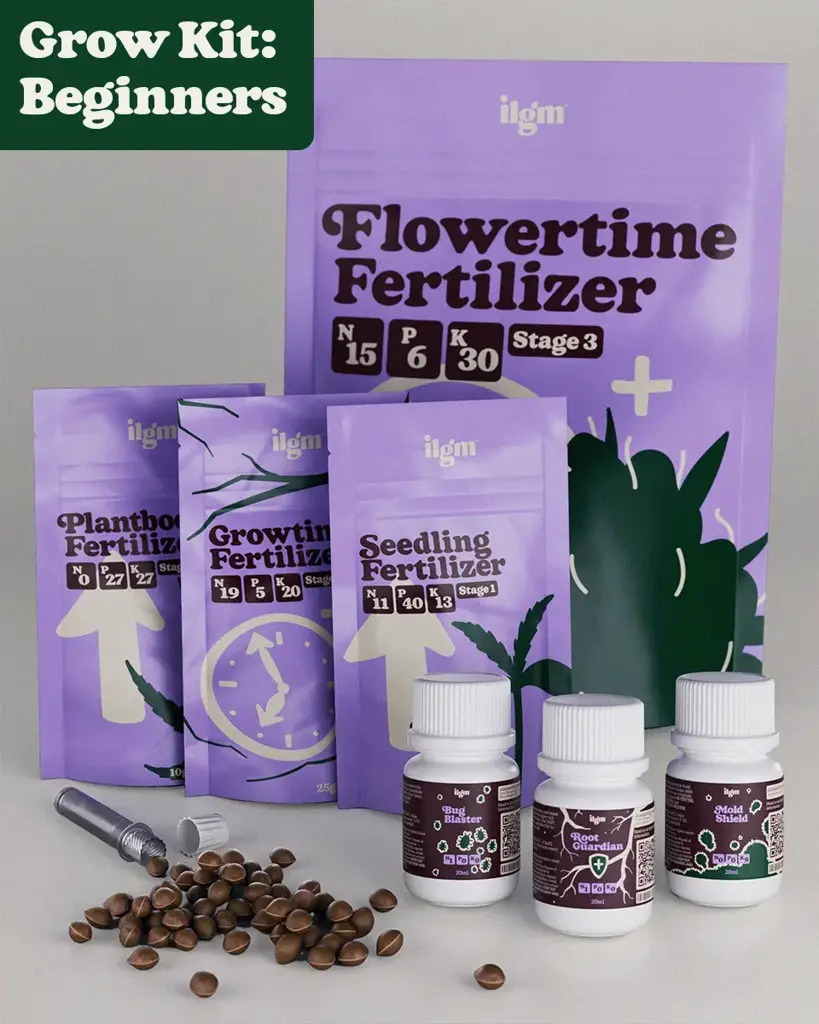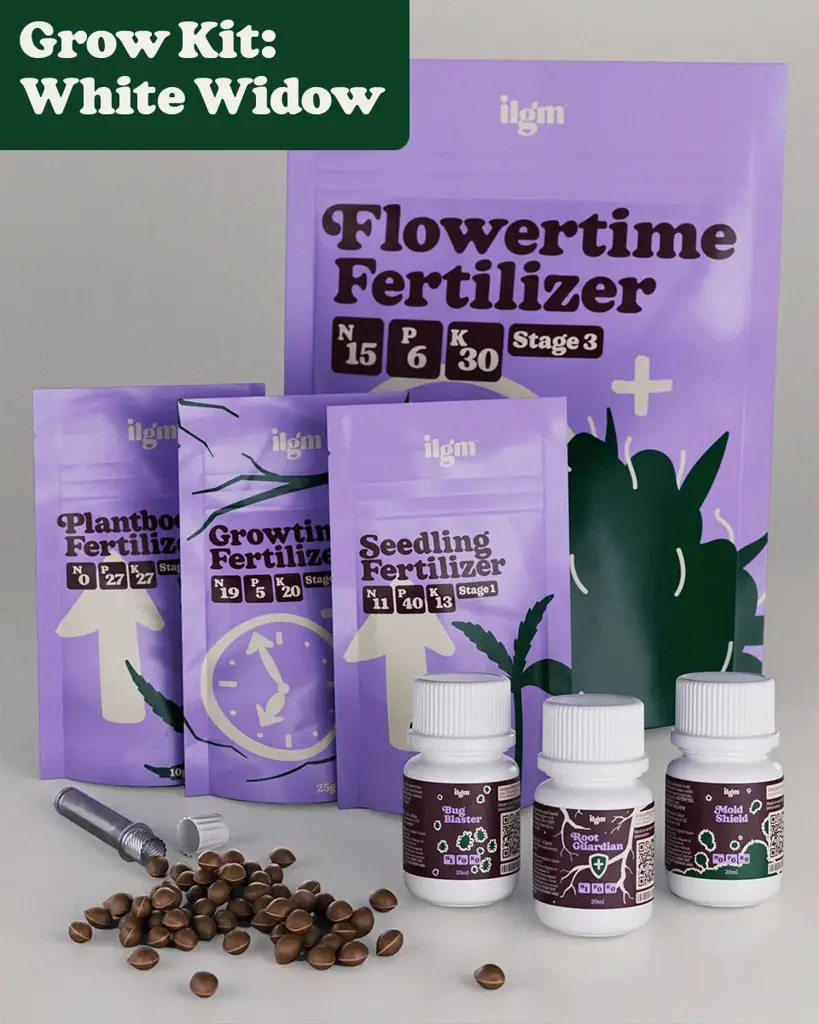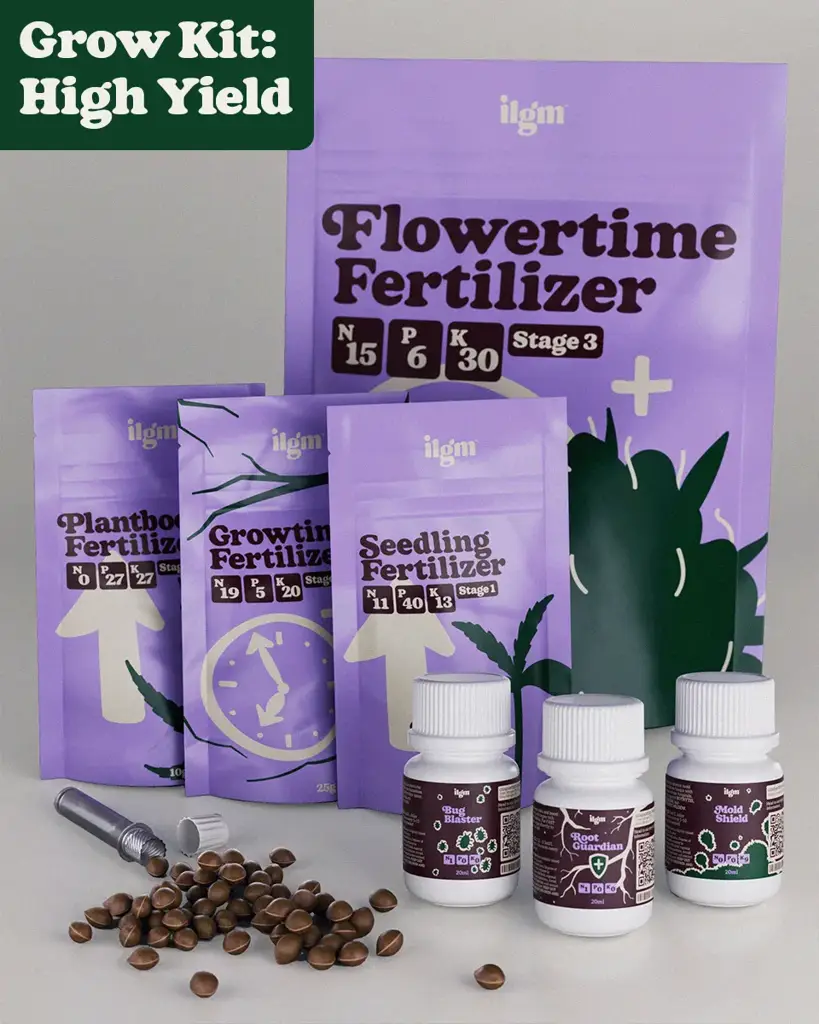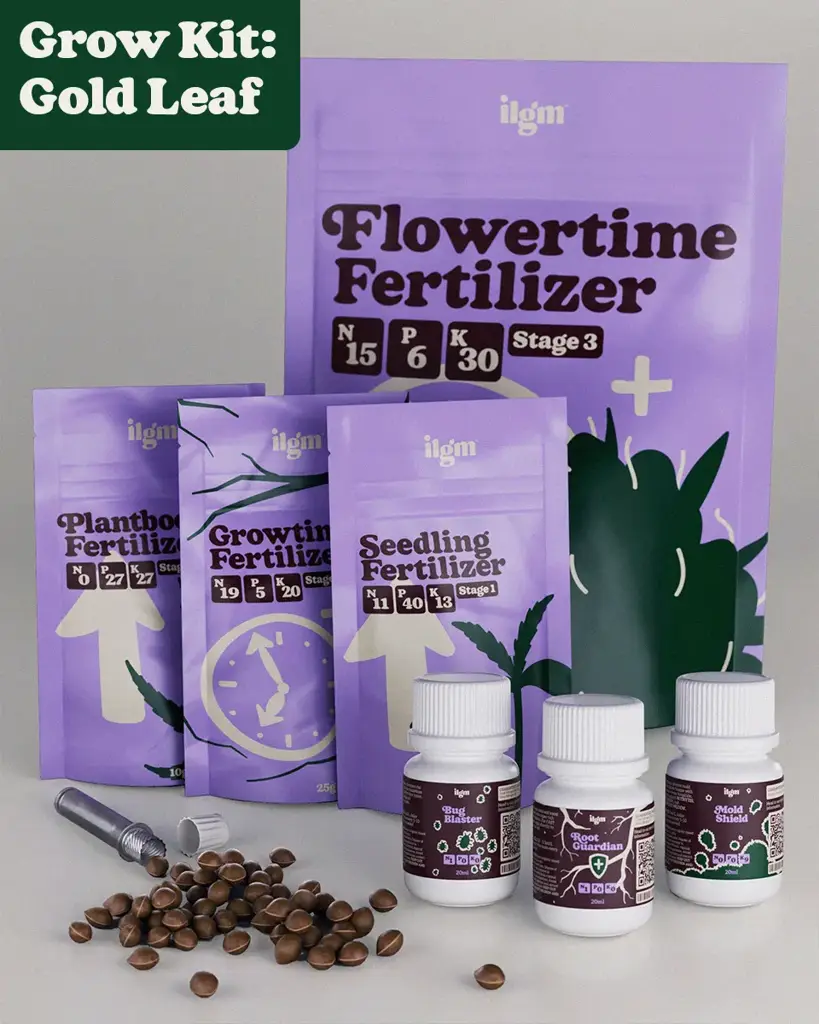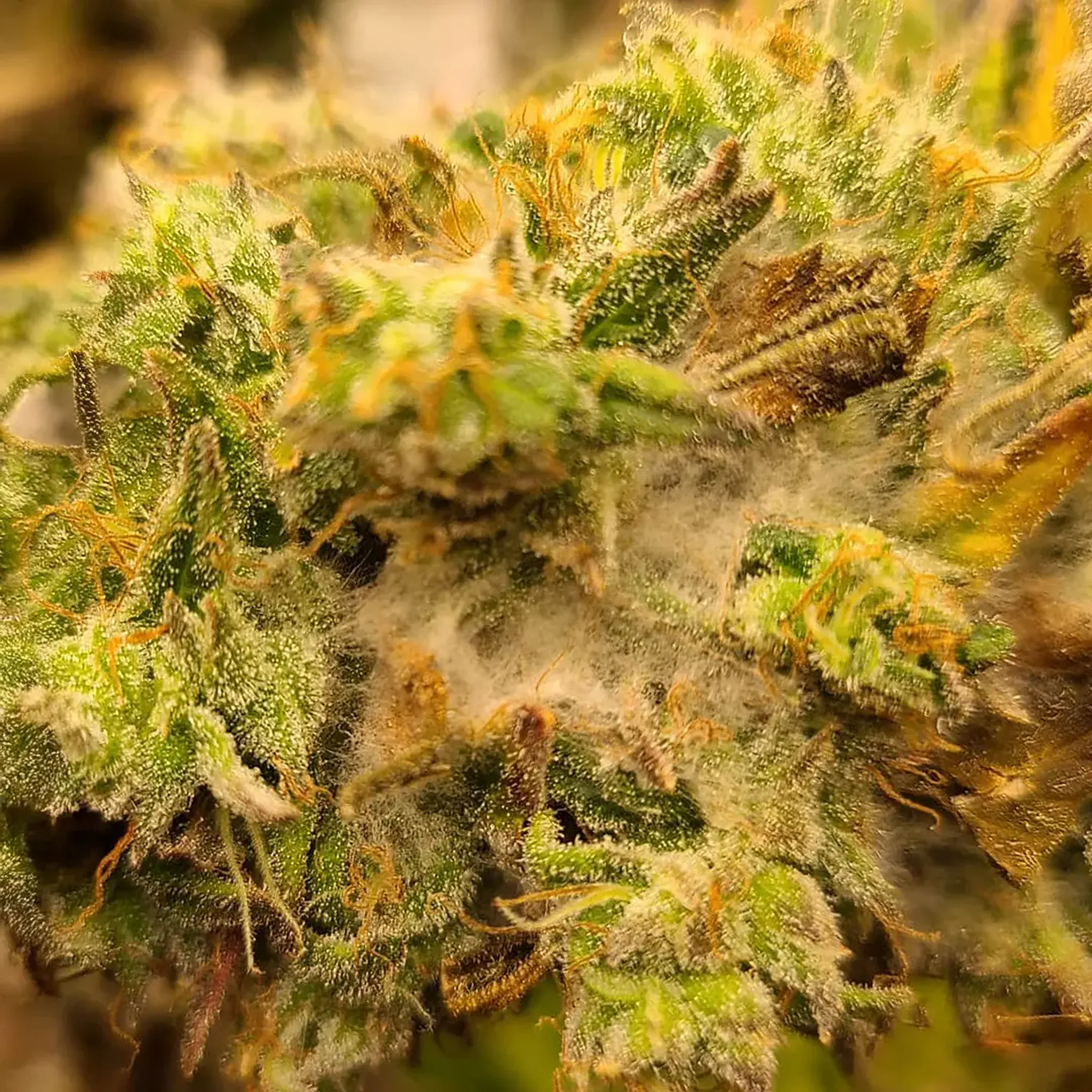
How to Prevent Bud Rot (Botrytis cinerea) in Cannabis
When your biggest nug turns brown overnight
There’s no heartbreak quite like walking into your flower room and finding your best cannabis flower (or Cola) —dense, frosty, picture-perfect—collapsing into a brown, soggy mess. One day she’s shining under the lights; the next she’s gray and lifeless. That’s bud rot, or Botrytis cinerea, and once it gets inside a flower, there’s no saving it.
Robert Bergman
Founder at I Love Growing Marijuana
Table of contents
- TL;DR: The fast fix
- What Exactly Is Bud Rot, and Why Does It Hit Cannabis So Hard?
- How Can I Spot Bud Rot Before It Spreads?
- What Conditions Make Bud Rot Explode?
- What’s the Best Humidity and Temperature to Prevent Bud Rot?
- How Should I Water and Prune to Keep Flowers Dry?
- Do Genetics and Bud Structure Matter?
- What Can I Use for Organic or Compliant Protection?
- Can Bud Rot Strike After Harvest?
- What Should I Do If I Find Bud Rot Mid-Grow?
- Common Myths Worth Clearing Up
- FAQ
- The Takeaway: Think Microclimate, Not Just Humidity
But here’s the twist: most growers don’t lose buds because of high humidity alone. They lose them because of hidden microclimates inside the cannabis flower—those humid little pockets where air stalls and moisture lingers long enough for Botrytis spores to germinate. Understanding and managing that microclimate is how you win the battle.
TL;DR: The fast fix
Bud rot (gray mold) starts deep inside dense flowers when humidity and leaf wetness stay high for hours (especially after lights-off). Prevention isn’t just about room RH; it’s about airflow, VPD, and dry-down timing. Keep a 6–8 °C buffer between leaf temperature and dew point, maintain 1.2–1.6 kPa VPD in late flower, and dry to ≤ 0.65 aw (58–62% RH) before sealing. Once you see brown or gray fuzz, cut it out immediately; she won’t recover.
What Exactly Is Bud Rot, and Why Does It Hit Cannabis So Hard?
Bud rot is caused by the fungus Botrytis cinerea. It thrives when moisture, still air, and cool temperatures meet plant tissue. In cannabis, it targets flowers because the bracts and sugar leaves trap humidity better than any greenhouse crop.
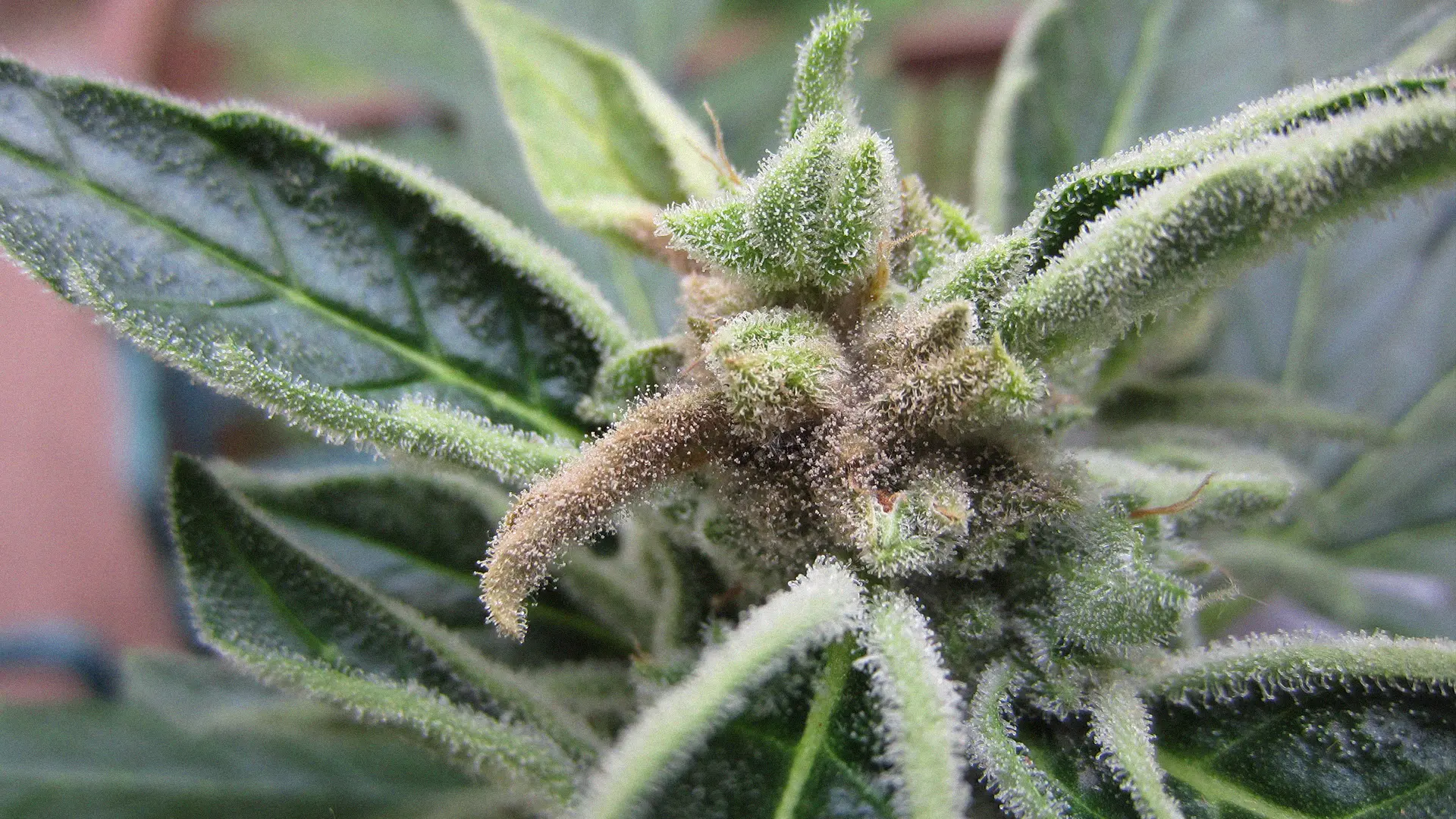 Early onset Bud rot (sickly brown/gray) as shown by our forumuser Kabongster
Early onset Bud rot (sickly brown/gray) as shown by our forumuser Kabongster
Early infection looks like dark, wet-brown tissue hidden inside the bud—not gray yet, just unhealthy-looking and soft. A day or two later, it blooms into the familiar fuzzy gray mold. By then, spores are airborne and looking for their next victim.
Those spores don’t need much: about 8–12 hours of leaf wetness at ≥ 85–90% RH and temps around 55–75 °F (13–24 °C) are enough for germination. You can keep your tent at 45% RH all you want—if the air inside the cola is trapped and still, the fungus will find its chance.
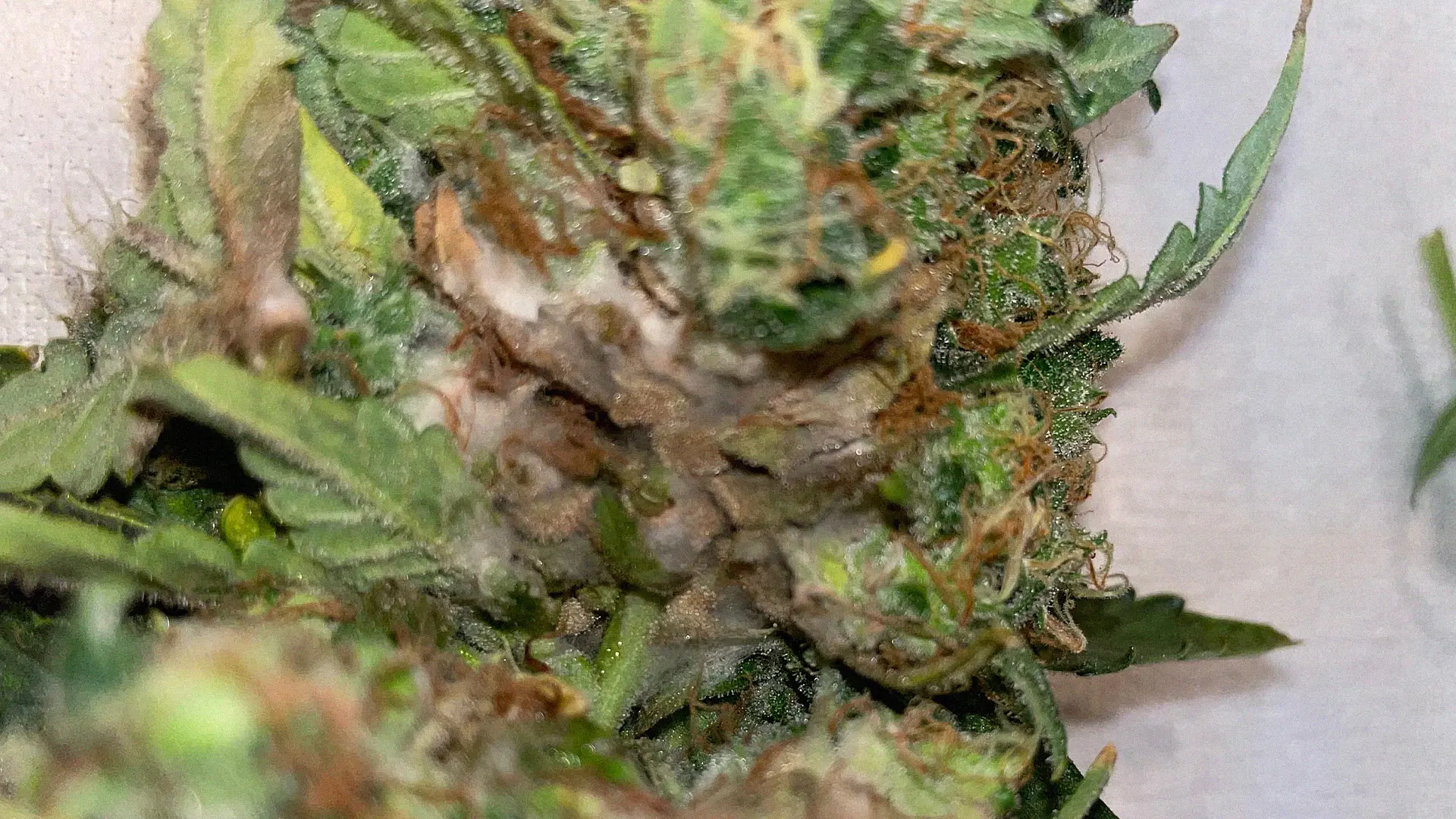 Late stage Bud rot as shown by NewbieNick
Late stage Bud rot as shown by NewbieNick
Our Bestsellers
How Can I Spot Bud Rot Before It Spreads?
Start looking for color and texture changes deep in the flowers—a bruise-brown patch, sometimes with a dull sheen or slightly mushy feel. It won’t smell sweet or skunky anymore; it’ll smell damp, earthy, like wet cardboard.
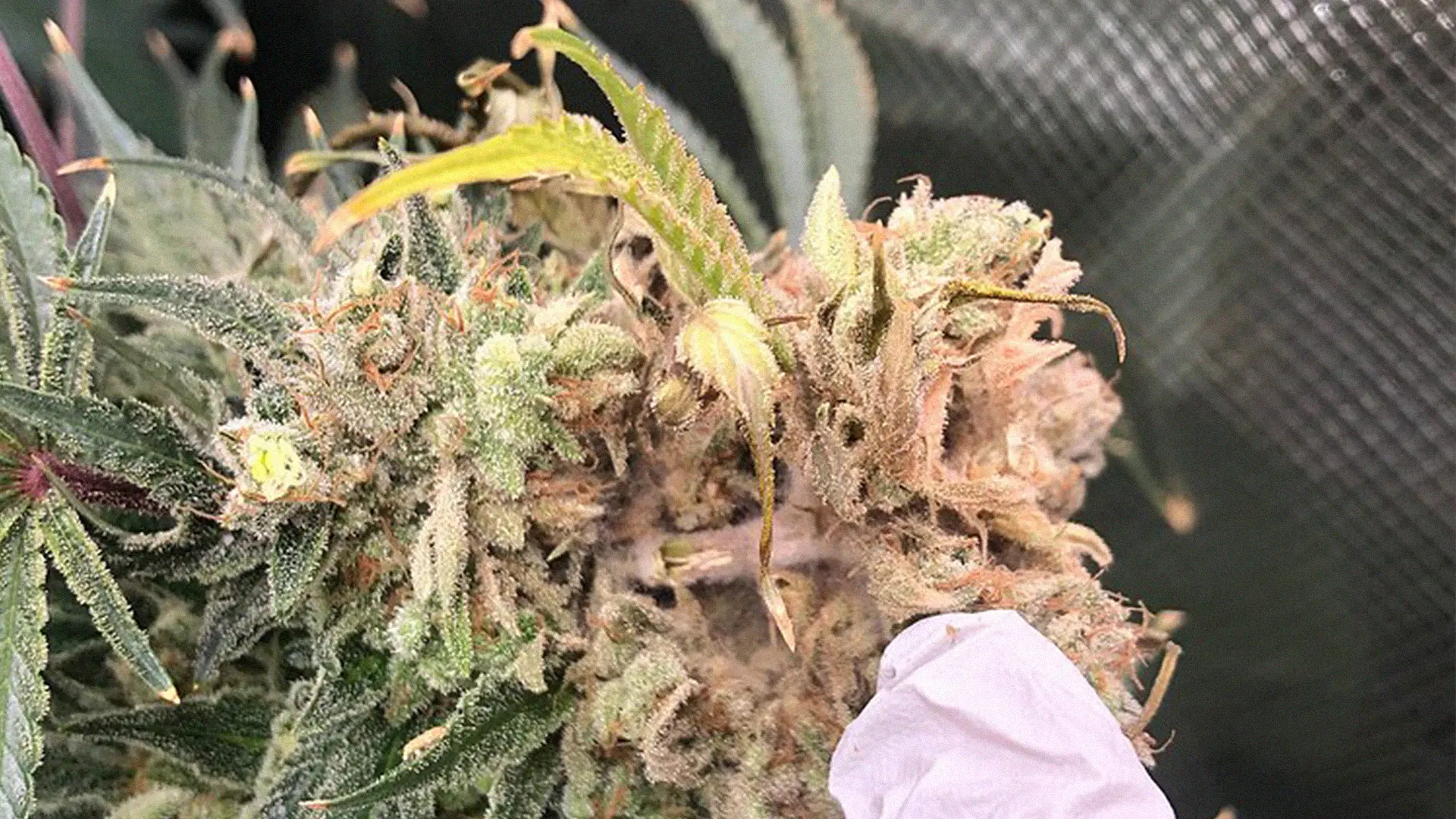 Example from our forumuser Adt187
Example from our forumuser Adt187
Gently pull the bracts apart near the stem. If you see grayish mycelium or dust-like spores, it’s already sporulating. Cut well below that point and bag it immediately; touching healthy buds with contaminated scissors spreads it faster than you think.
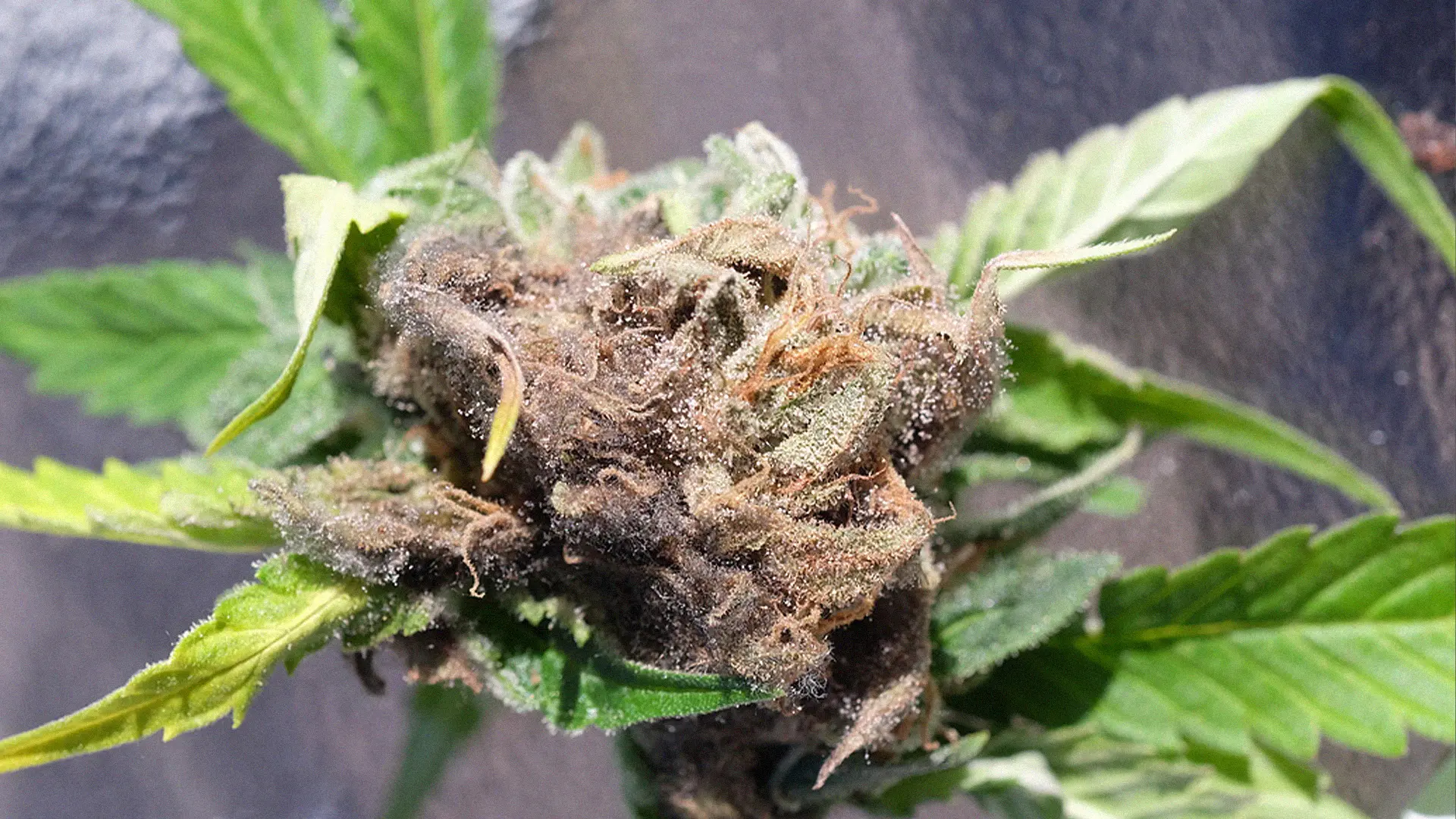
Example from our forumuser Elliot
Grower tip: Use separate trimming scissors for infected material. A spritz of 70% isopropyl between cuts keeps spores from hitchhiking.
What Conditions Make Bud Rot Explode?
Three environmental factors create perfect storm conditions:
Cool, humid nights — RH spikes when lights turn off and leaf temperature drops.
Poor in-canopy airflow — Stagnant air pockets in big colas trap moisture.
Prolonged wetness — Condensation or late watering that keeps bracts damp overnight.
Even “safe” rooms can fail if the dew point creeps too close to leaf temperature. Keep at least a 6–8 °C (10–14 °F) gap—your dew-point buffer. Sensors that read leaf temp (or even a cheap infrared thermometer) make all the difference here.
What’s the Best Humidity and Temperature to Prevent Bud Rot?
Forget absolute numbers; think vapor pressure deficit (VPD)—the relationship between temperature and humidity that drives transpiration. For mid-to-late flower, aim for 1.2–1.6 kPa VPD, which usually lands around 60–68 °F leaf temp and 50–55% RH.
That sweet spot keeps the surface of the bracts just dry enough that spores can’t germinate but not so dry that trichomes or terpenes suffer.
Pair that with constant, gentle air movement inside the canopy—not blasting fans, but oscillating airflow that moves between colas and underneath them. Clip fans aimed diagonally through the canopy work better than wall blowers.
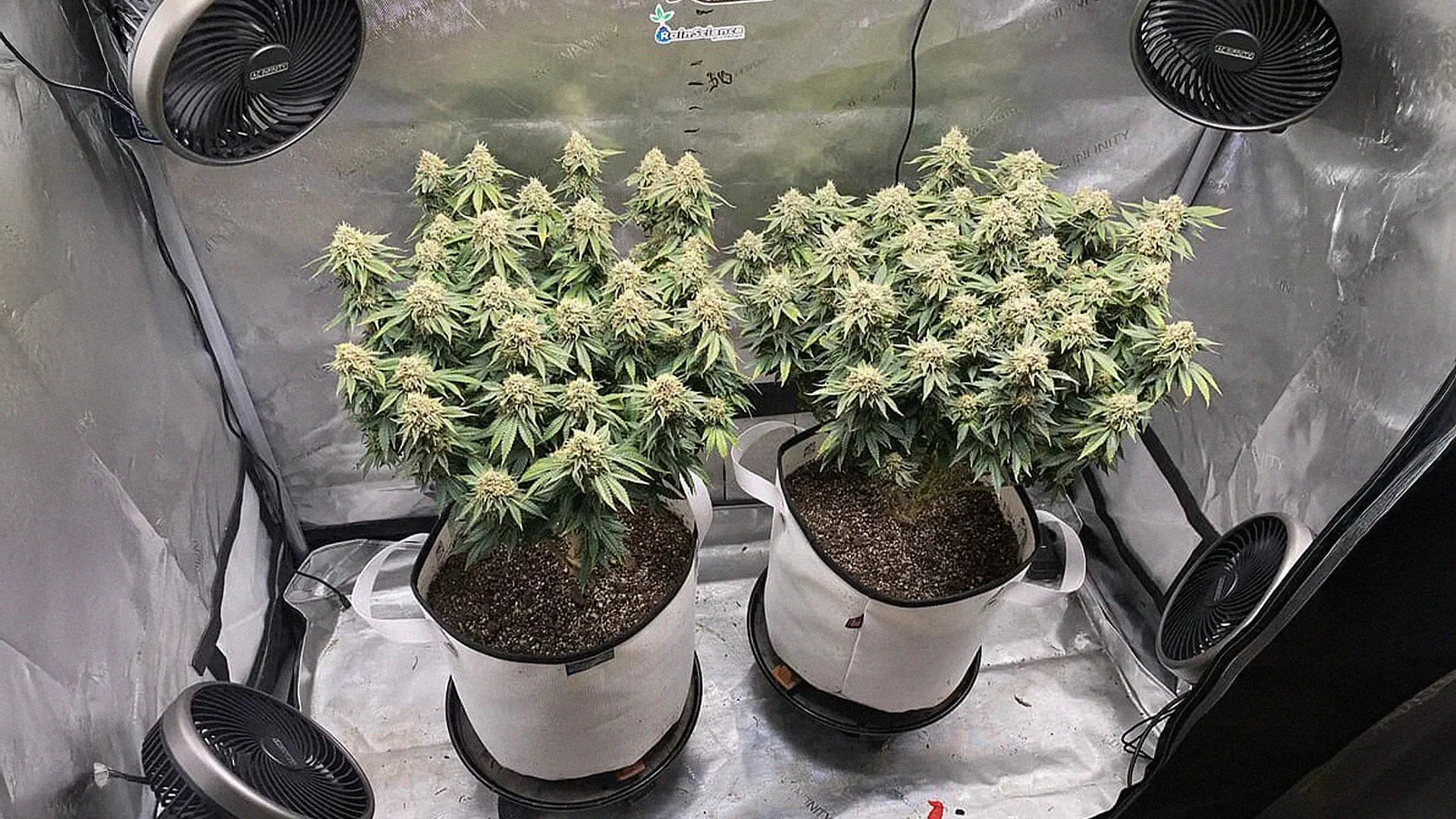 The best fan setup to control airflow and VPD in your indoor grow tent, example by Newt
The best fan setup to control airflow and VPD in your indoor grow tent, example by Newt
How Should I Water and Prune to Keep Flowers Dry?
Timing and airflow are your best allies.
Water straight after you switch on the lights, so plants dry off before nightfall.
Never foliar spray after week 2 of flower.
Defoliate strategically—remove big fan leaves that shade lower buds and trap humidity, but don’t overdo it; some leaf mass is needed to buffer temperature.
Space plants so the canopy “breathes.” If colas touch, Botrytis can move straight across like a bridge.
Do Genetics and Bud Structure Matter?
Absolutely. Cultivars with open, airy flowers and fewer sugar leaves have far lower Botrytis risk than cannabis plants that produce rock-hard, dense nugs.
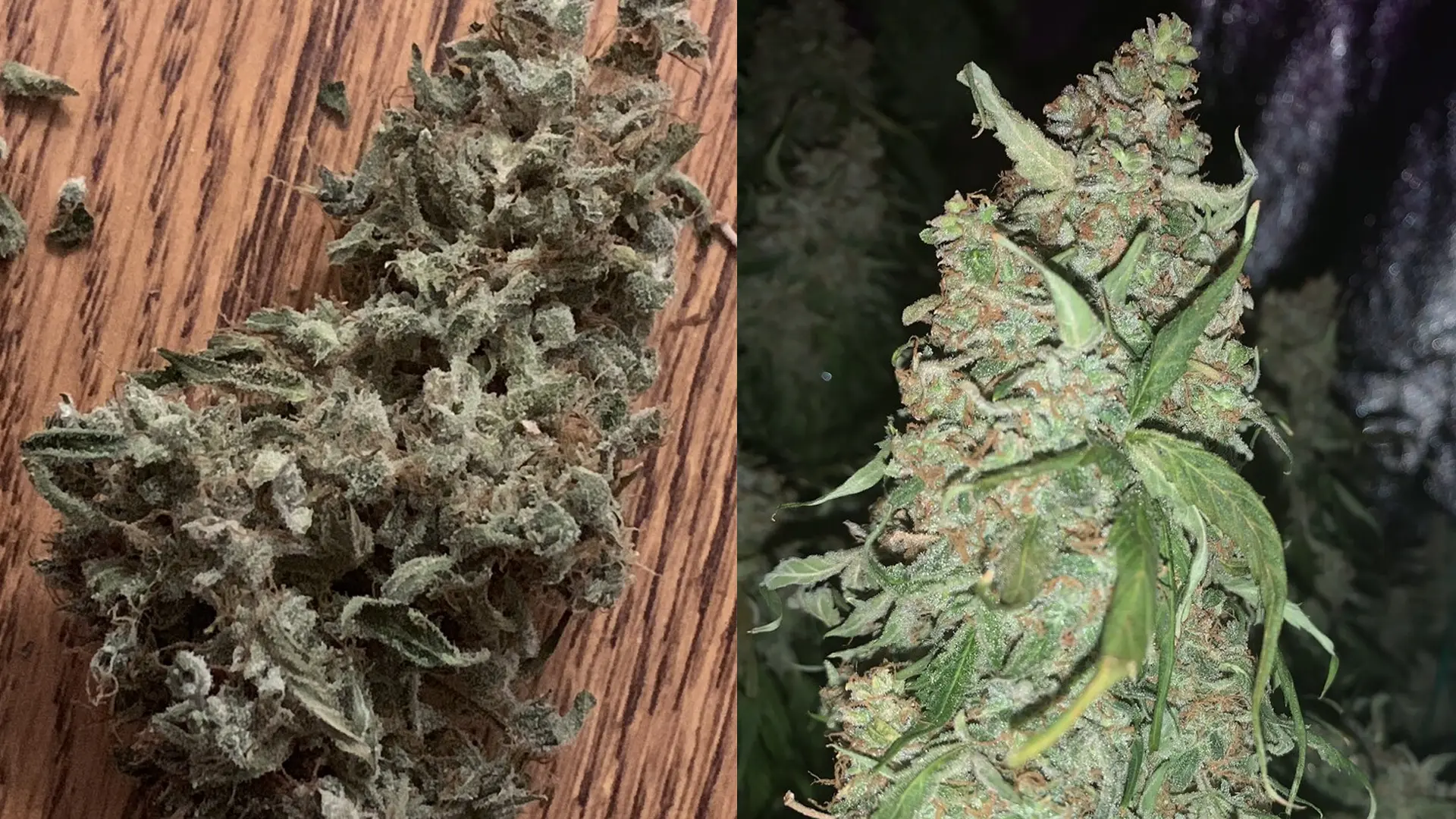 Left: an more airy, fluffy bud versus right: an dense, solid nug. Example by our forumuser Fluffy
Left: an more airy, fluffy bud versus right: an dense, solid nug. Example by our forumuser Fluffy
If you grow in a humid climate, look for genetics labeled mold-resistant or bred for coastal/outdoor environments. These tend to have more open calyx spacing and better airflow through the buds.
Conversely, heavy-yielding indoor varieties like to pack calyx on calyx—great for bag appeal, terrible for airflow. In that case, microclimate control is non-negotiable.
What Can I Use for Organic or Compliant Protection?
Since federal law still blocks most fungicides from being labeled for cannabis, state-approved 25(b) “minimum-risk” products and biocontrol microbes are your safest bets.
Bacillus subtilis and Bacillus amyloliquefaciens products (e.g., Serenade-type biocontrols) can colonize plant surfaces and outcompete Botrytis spores if applied early and regularly.
Pseudomonas-based sprays are showing promise in research but need more cannabis-specific data.
Always check your state’s approved product list (CA DPR, CO Dept. of Ag, etc.) before spraying anything on flowering plants.
Can Bud Rot Strike After Harvest?
Unfortunately, yes. Botrytis doesn’t stop growing until the water activity (aw) of your buds drops below 0.65—roughly 58–62% RH at room temp.
That’s why drying too fast or too slow both cause trouble. Hang whole branches in a room around 60–70 °F with 58–65% RH and good airflow. Once stems snap cleanly, jar or bin-cure the buds—but keep testing.
If your aw meter reads > 0.70, mold can still bloom inside sealed jars. Burp them or redry gently until you hit that 0.65 zone, then seal with confidence.
What Should I Do If I Find Bud Rot Mid-Grow?
Isolate immediately. Move infected plants or branches out of the room.
Cut well past the infection. Go at least two inches into clean tissue.
Disinfect tools between every cut.
Boost airflow and drop humidity for the next few days.
Inspect daily. Once spores are loose, reinfection can happen fast.
Never dry or smoke infected buds. Inhaled mold spores can cause allergic or respiratory reactions—especially dangerous for medical users.
Common Myths Worth Clearing Up
“Bud washing cures mold.” Nope. Washing can remove dust and surface spores, but can’t reverse internal infection. You’ll only end up with wetter buds and a ticking clock.
“Just keep RH at 45%.” That might keep your room safe, but the air inside a dense cola can still hit 90% RH. Manage VPD and airflow, not just room humidity.
“You can salvage part of a moldy bud.” Once Botrytis is visible, hyphae have already spread beyond what you see. Cut generously or lose the rest.
FAQ
What humidity prevents bud rot in flowering?
Keep ambient RH around 50–55% with adequate airflow and a leaf-temp VPD near 1.3 kPa. It’s the leaf’s surface humidity, not the room setting, that matters.
Can I smoke weed with bud rot?
No. Botrytis produces allergens and possible mycotoxins. Always discard infected flower.
Does bud washing help prevent mold?
Only for outdoor harvests to remove debris—not for curing or internal rot. Ensure buds dry completely afterward.
What’s the safest way to dry without mold?
Hang branches at 60–70 °F, 58–65% RH, and steady airflow until stems snap, then cure to ≤ 0.65 aw before sealing.
Which strains resist bud rot?
Look for genetics bred for humid climates—sativa-leaning or open-structured cultivars. Airy bud architecture equals less risk.
The Takeaway: Think Microclimate, Not Just Humidity
Bud rot isn’t a random curse—it’s physics and biology conspiring when we give them the chance. Once you learn to see your canopy as a landscape of tiny weather systems, you stop reacting to problems and start steering the environment instead.
Dial in that dew-point buffer, trim with airflow in mind, and treat drying like the final stage of protection. That’s how you turn the nightmare of brown buds into nothing more than a cautionary tale you tell the next new grower.
Continue Reading
You might also find these interesting.


